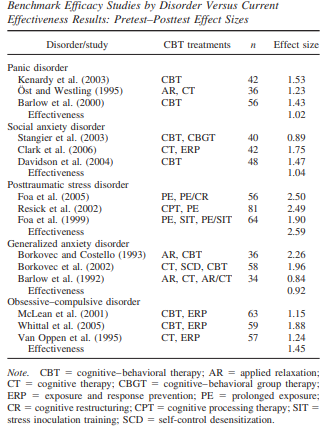However, David Clark broadly defined Cognitive Therapy as the process of identification of distorted thoughts, maladaptive beliefs and/or assumptions and consequent reshaping of the distorted cognitions with reality including and not limited to thought monitoring, and thought challenging, etc.
The cognitive model of psychopathology uses the information processing theory as a corollary through which specific data is gathered, interpreted, and matched with a memory of the individual who is then used as a guide that acts as the “coding system”. Each of these systems is biased and therefore systematically distorts the construction of one’s experience leading to engagement of various cognitive distortions (Beck, 1967) (eg. selective abstraction, arbitrary inference, personalization).
Underlying these distortions are sustained cognitive structures or schemas. When these schemas are activated they tend to influence and bias the information processing system creating a particular coding system for a specific disorder.
Anxiety Disorders use danger-oriented beliefs which stipulates the individual to narrow their attention to the threat while making catastrophic inferences of ambiguous stimuli. The information processing system is adulterated by danger oriented bias and is present across all anxiety disorders (Beck & Clark, 1997).

Table 1: Indicates the studies used in the Cognitive-Behavioral Therapy for Adult Anxiety Disorders in Clinical Practice: A meta-Analysis of Effectiveness Studies
The effectiveness of CBT (COGNITIVE BEHAVIOURAL THERAPY) which is another form of cognitive therapy that uses behavioral intervention techniques in order to treat various disorders, for adult anxiety disorders has been proven by a meta-analysis conducted by Stewart & Chambless (2009). They found that the pretest-posttest effect sizes (which is the quantitative representation of treatment efficacy) for disorder-specific symptom measures were large.
Indicating, patients treated with CBT in clinically representative studies displayed significant and substantial improvement from pretest when they completed treatment. The attached table indicates the studies used for the meta-analysis.
Another similar meta-analysis was conducted by Hans & Hiller, 2013 who found that CBT is an effective treatment for adult anxiety disorders. In fact, they found that the post-treatment effects of CBT to be more pronounced in patients showing more every disorder specific symptoms.
The cognitive model for panic disorder proposes a catastrophic interpretation of any unexplained symptom or sensation. Dysfunctional beliefs regarding the presumed danger of these situations trigger hypervigilance. The triggering of fearful cognition during a panic attack and the preoccupation with the catastrophic meanings along with the retention of frightening visual imagery further aids the integration of the panic experience and disengages from a realistic appraisal of the event. Studies suggest that a substantial proportion of patients with panic improve and remain so, responding positively to an average of 10-15 sessions of CBT (Westen & Morrison, 2001).
Several strategies based on the cognitive behavioural paradigm are used to treat panic disorder. Techniques to lower physiological arousal, reduce cognitive misinterpretation, develop coping skills, breathing retraining is found to be effective.
Another study conducted by Manjula and co-researchers (2009) found a clinically significant recovery rate was achieved in panic symptoms for those undergoing cognitive behavioural interventions. The researchers concluded that CBI is found to be effective in handling panic symptoms, cognitions and behaviours in a short span of six weeks.
In conclusion, anxiety disorders and panic disorders are widespread across the population. For those living with it, the struggles are debilitating. However, the treatment options manifold.
One such option is cognitive therapies which aid in reducing the psychological struggles as well as the symptom manifestations as found by numerous studies. The good news is for those who need help, it is just around a corner. Reaching out is the best option.
References :
1- Beck, A.T. (1967). Depression. Harper and Row: New York.
2- Beck, A.T., Rush, A.J., Shaw, B.F., & Emery, G. (1979). Cognitive therapy of depression. New York: Guilford.
3- Beck AT, Clark DA. (1997) An information processing model of anxiety: automatic and strategic processes. Behav Res Ther. 35:49-58.
4- Ellis, A. (1958). Rational psychotherapy. Journal of General Psychology, 59, 245–253.
5- Hans, E., & Hiller, W. (2013). A meta-analysis of nonrandomized effectiveness studies on outpatient cognitive behavioral therapy for adult anxiety disorders. Clinical psychology review, 33(8), 954-964.M, 875.
About the Author.
 Ms.Rineeta Banerjee, A Postgraduate student at the University of Calcutta, Rineeta is a mental health activist, a book nerd, and a lover of all things psychology! Her primary focus is on understanding human experiences through qualitative research and academic writing.
Ms.Rineeta Banerjee, A Postgraduate student at the University of Calcutta, Rineeta is a mental health activist, a book nerd, and a lover of all things psychology! Her primary focus is on understanding human experiences through qualitative research and academic writing.

